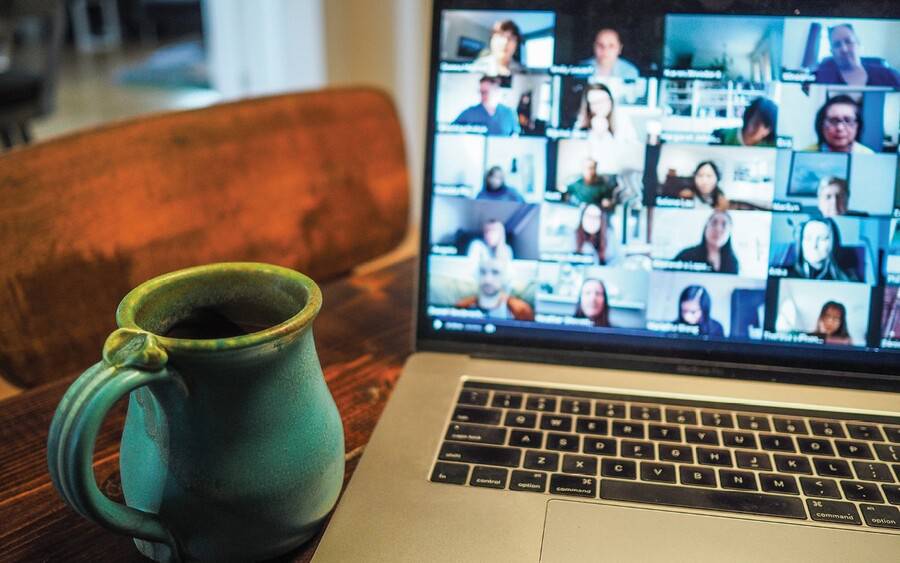What Is Zoom Fatigue?
Frequent video calls can be draining but there are solutions

Frequent video calls can be draining but there are solutions
If you’re feeling more tired than usual at the end of your day, you’re not alone. It could be meeting fatigue — or Zoom fatigue as experts are calling it. It could be the tiredness, worry or burnout associated with overusing virtual platforms.
As with many other experiences associated with COVID-19, Zoom fatigue is widespread, new and can be intense.
For many people, working from home during COVID-19 has meant spending a lot of time on video calls or virtual meetings, in addition to socializing virtually when off the clock.
Getting to know videoconferencing apps, such as Zoom, Microsoft Teams and Skype, may have seemed the perfect solution to being thrust into virtual space at first. But getting used to videoconferencing has been another story. According to experts, constant videoconferencing has impacted the brain in complicated ways and has taken a toll.
Zoom fatigue stems from how we process information over video, according to a report in the Harvard Business Review. Staring at a video camera for long periods for work purposes can make us uncomfortable and tired, according to the report.
You may worry about how you look or how you’re performing in front of the camera. The intense focus on words and sustained eye contact can become exhausting. Without the visual breaks we need to refocus, our brains can become fatigued.
“Remember to limit video calls to those that are necessary, disconnect when you need to or schedule time in between video calls so you can get up and move around,” says Manika Talati, DO, an internal medicine physician at Scripps Coastal Medical Center Oceanside.
How can we reduce Zoom fatigue?
Here are five research-based tips from the Harvard Business Review report that can help make video calls less tiring.
1. Avoid multitasking
Research shows trying to do multiple things at once cuts into how we perform. Some people feel they can listen intently while checking email, texting or doing another task. But according to researchers, people who multitask can’t remember things as well as their more intently focused peers.
To reduce distractions, the next time you’re on a video call, close any tabs or programs that might take away your attention, put your phone away and stay present. You’ll feel less tired afterward.
2. Build in breaks
Take small breaks during long video calls by minimizing your screen window, or by looking away from your computer for brief moments. In other words, let your eyes rest for a moment or two.
“Visual fatigue caused by staring at a digital screen for long periods at a time can cause headaches, tired eyes, difficulty concentrating and neck or back pain,” Dr. Talati says.
Be flexible when it comes to back-to-back video calls. Consider making meetings 25 or 50 minutes, instead of the standard 30 minutes and hour. The extra five minutes builds time in between meetings for people to get up and move around. If hosting an hour-long video call, make it okay for people to turn off their cameras for parts of the call.
3. Reduce onscreen stimuli
Hide yourself from view if you find that you’re spending most of the time gazing at your face during video calls. You may feel more comfortable turning the camera off and actively listening instead.
If you get easily distracted by backgrounds in other people’s windows, encourage those in the meeting to use plain backgrounds or agree as a group to have those not talking turn off their video.
4. Switch to phone calls or email
Check if you can have any conversations over the phone or through email instead of through video. It’s okay to suggest a phone call and say you need to take a break from video calls, especially in a one-on-one situation. The other person might welcome the break too.
5. Make virtual social events opt-in
Make virtual social sessions an opt-in activity and don’t feel pressured to join in. You can always participate without video as well.
It may seem hard to follow some of these tips, but if you’re feeling overwhelmed or tired from doing too many video calls, these steps may help make those Zoom calls easier to handle.
“Remember to have compassion for yourself and others as we navigate through this virtual terrain,” says Dr. Talati. “Find out what works for you regarding virtual communications and don’t be afraid to set boundaries.”